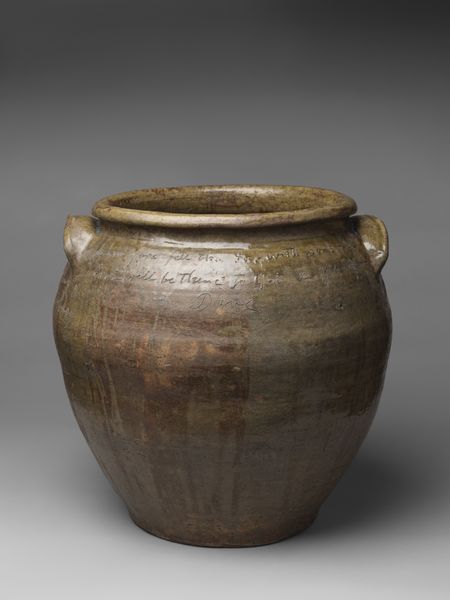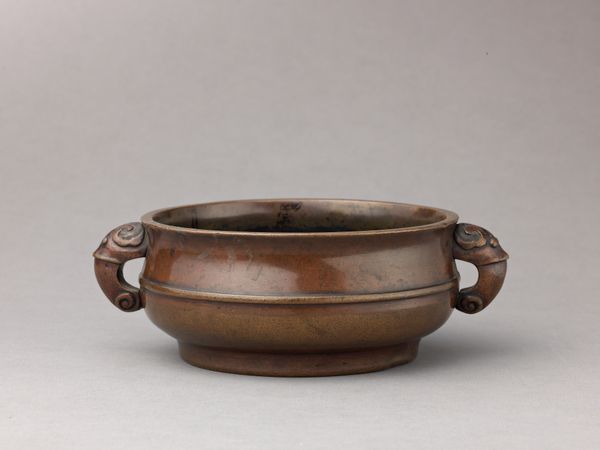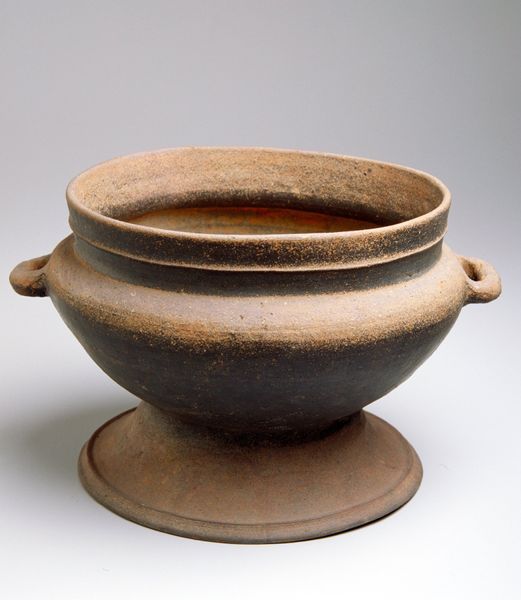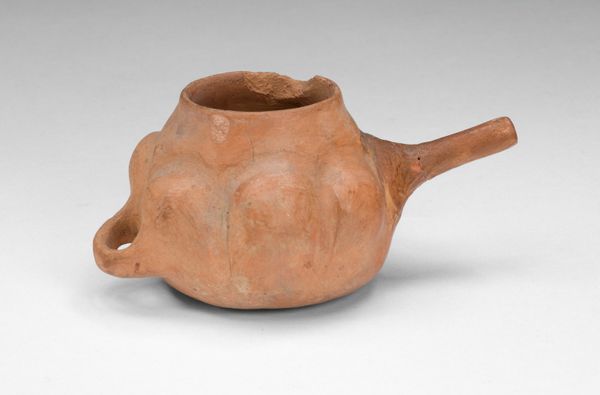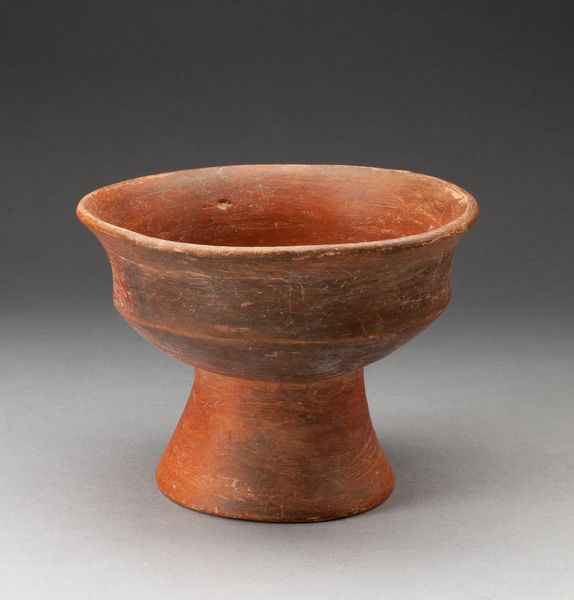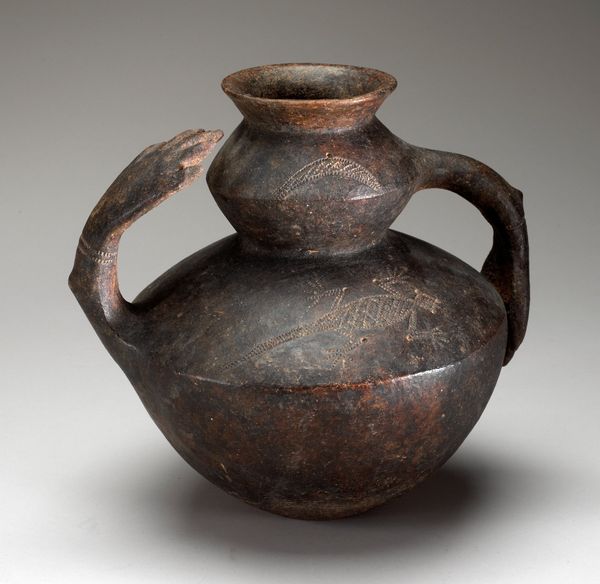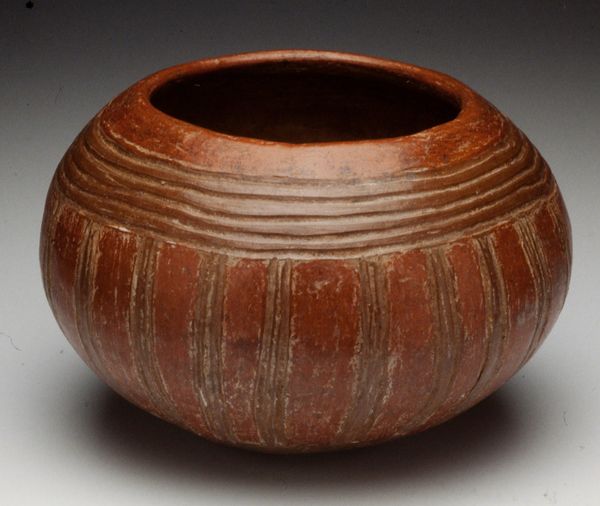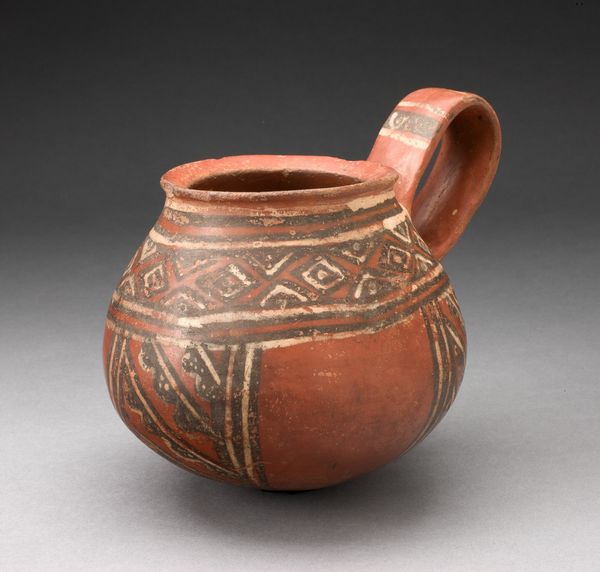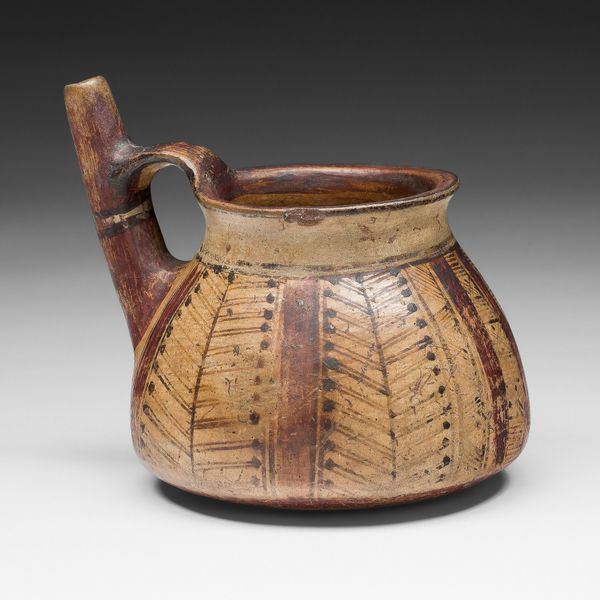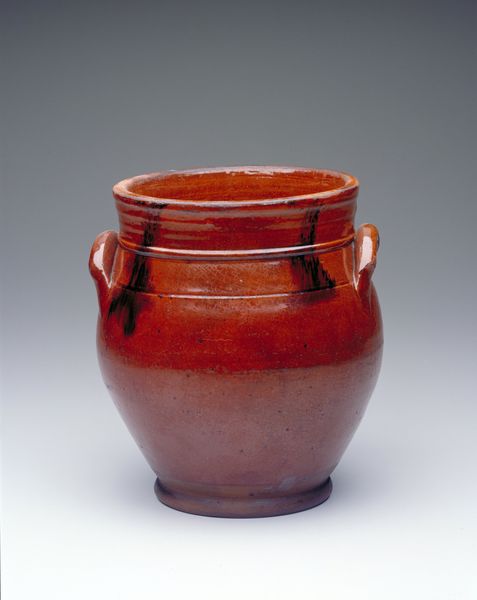
ceramic, earthenware
#
ceramic
#
earthenware
#
ceramic
#
indigenous-americas
Dimensions: 5.4 × 7.8 cm (2 1/8 × 3 1/16 in.)
Copyright: Public Domain
Curator: Editor: This is "Miniature Two Handled Jug", made of earthenware sometime between 1450 and 1532, created by an artist or artisan of the Inca culture. It has a warm, rustic feeling. What do you see when you look at it? Curator: I see more than just a jug; I see a fragment of a complex society. The Inca empire's sophisticated engineering, agricultural practices, and political organization rested on a foundation of labor and resource extraction that profoundly impacted the lives of its people, especially women. How does this utilitarian object reflect their struggles? Editor: Well, it’s a simple design, and being miniature, perhaps it was used for something ceremonial? Or maybe even a child's toy? I’m just thinking out loud. Curator: Both are interesting ideas. Consider that ceramic vessels were integral to Inca daily life. The form itself tells a story of adaptation and ingenuity. The handles allow for practical transport, a necessity in a society built on the movement of goods. Do you notice the reddish hue? That would’ve come from locally sourced clay, reflecting a deep connection to the land. Editor: That's true; you don't often think about the connection to the earth itself in these objects. But it’s small, almost easily dismissed. Is that a deliberate comment on power structures at all? Curator: Its size might be deceptive. Everyday objects often carry potent symbolism. What looks small might have held significant ritualistic or functional importance, acting as a silent witness to historical shifts. Think about the relationship between the artist and their labor – were they celebrated, anonymous, or even forced to create? Editor: That’s given me a lot to consider. Thank you. Curator: Absolutely. These artifacts encourage us to look past face value. It challenges us to reconsider history from multiple perspectives, which allows a better understanding of colonial effects of these artifacts.
Comments
No comments
Be the first to comment and join the conversation on the ultimate creative platform.
